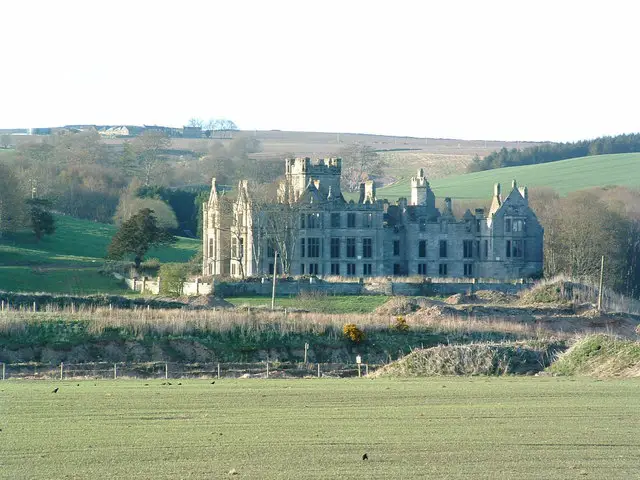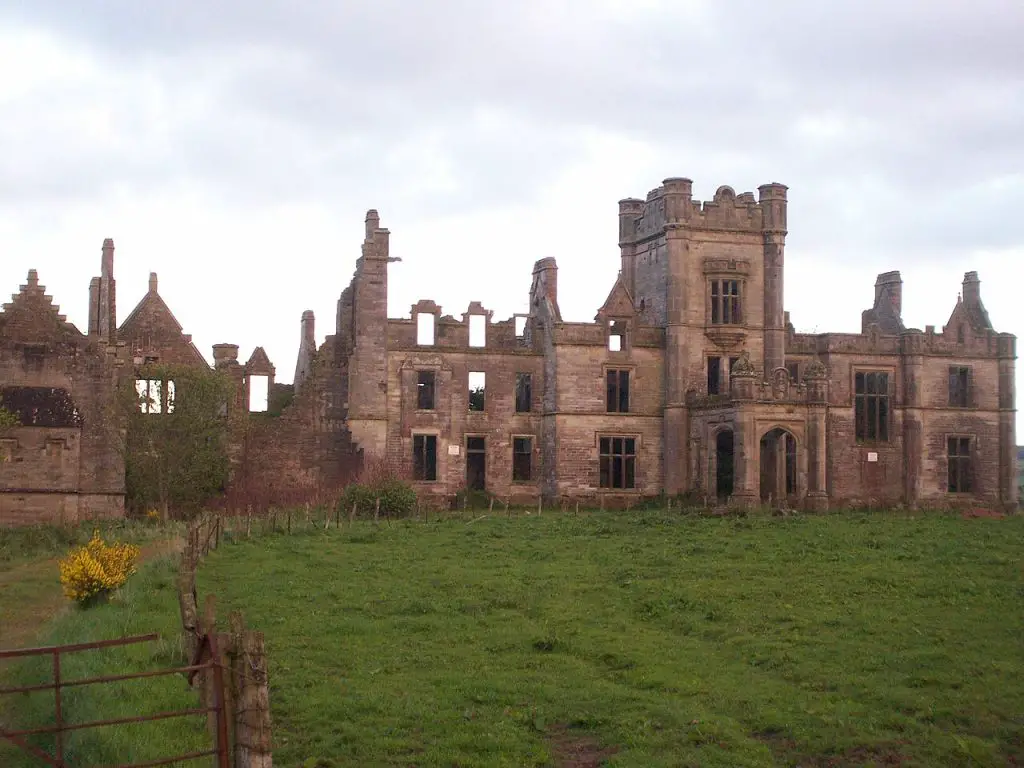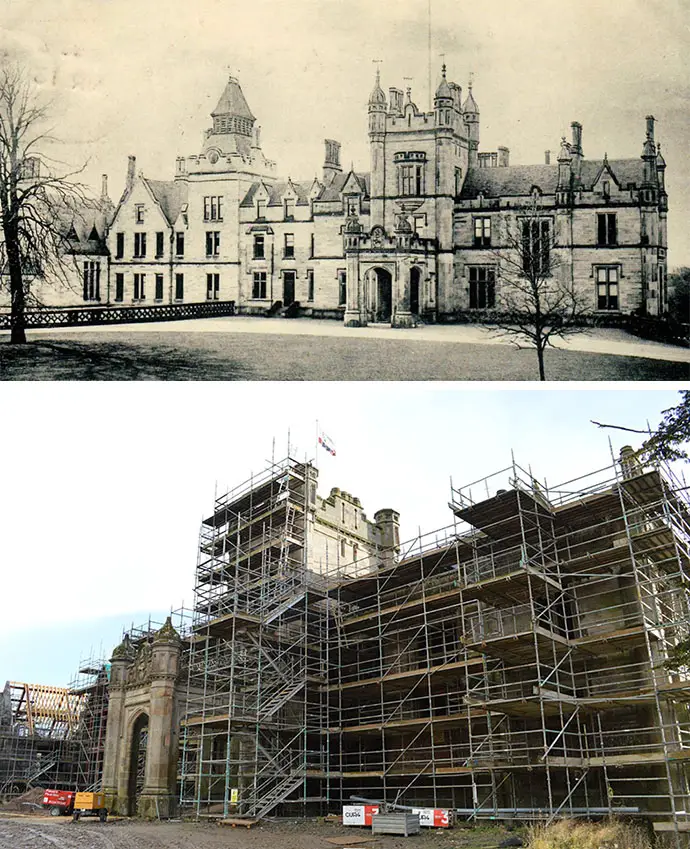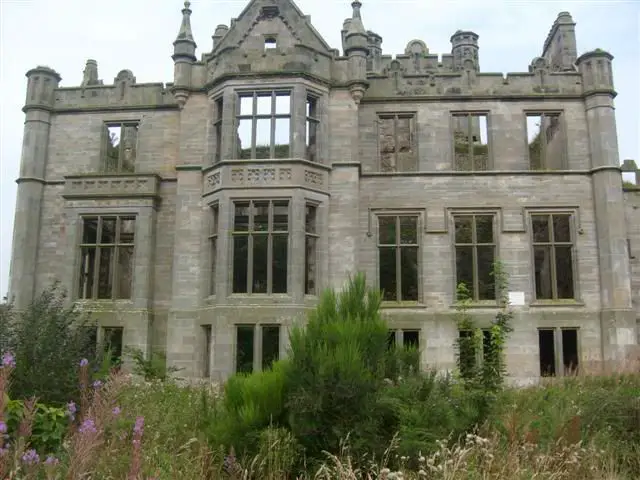It seems there might be a small error in your statement. Ury House was actually built in 1855 by architect John Baird, not in 1885. Sir Alexander Baird, 1st Baronet, was indeed associated with the estate, but he was not the builder of Ury House. The mansion was constructed in the Elizabethan style and is located approximately 1 mile (1.6 km) north of Stonehaven on the north-east coast, within the former county of Kincardineshire, Aberdeenshire, Scotland.

The Ury House site has revealed Bronze Age cists, adding to its historical significance. In ancient times, Roman legions marched from Raedykes to the nearby Normandykes Roman Camp, strategically opting for higher ground to avoid the challenging terrain of Red Moss and the low-lying mosses connected with the Burn of Muchalls. This march followed the Elsick Mounth, an ancient trackway traversing the Mounth of the Grampian Mountains and situated to the west of Netherley.
The Ury estate has a rich history of changing ownership. Originally belonging to the Frasers and later the Hays from 1413, it eventually came under the possession of the Earl Marischal. In the late 1660s, Colonel David Barclay undertook a lengthy process to acquire Urie, and his descendants held ownership until 1854. In that year, the estate transitioned to the Baird family after its purchase (source: Clan Barclay and newspaper archives Stonehaven).

Colonel David Barclay’s son, Robert Barclay, a prominent Quaker apologist, succeeded him as the second laird. The ownership lineage continued through Robert Barclay Allardice (1732-1797) and then to his son, Captain Robert Barclay Allardice, renowned for his achievements as a pedestrian.
The Ury estate underwent three reconstructions over the years, reflecting its evolving history and the changing needs of its inhabitants (source: Clan Barclay and newspaper archives Stonehaven).

In its early history, the property was known as Urie. Notably, in the 17th century, David Barclay established Ury as the North-East Scotland headquarters of the Quaker organization, marking a significant chapter in the estate’s legacy.
As of today, Ury House stands in a state of disrepair, and its precarious condition restricts access due to safety concerns. In March 2007, FM Developments submitted a revised planning application for a golf and leisure complex on the estate after a prior housing development proposal was turned down in October 2006. Earlier attempts to restore the property, including a 2004 planning application, faced rejection from the local Community Council.

Presently, The FM Group is the owner of the estate and has recently submitted a planning application to Aberdeenshire Council. This proposal outlines the development of a world-class 18-hole Jack Nicklaus Signature Championship Golf Course as part of the overall redevelopment plan for Ury Estate. In early 2019, Aberdeenshire Council approved plans for a housing development within the estate’s grounds, consisting of three houses and 58 three-story flats. Additionally, the conversion of Ury House into a hotel was given the green light as part of this comprehensive redevelopment initiative.
The western boundary of Ury Estate is marked by Fetteresso Forest. Approximately 150 meters south of Ury House, the Burn of Monboys merges with the Cowie Water at their confluence. The Cowie Water, as assessed at the Ury Estate’s perimeter, exhibits a generally alkaline pH. However, its pH is slightly lower above the point of confluence with the Burn of Monboys. Lumina Tech attributes this variation to the more acidic drainage originating from upland moorland peat areas within the Burn of Monboys watershed.